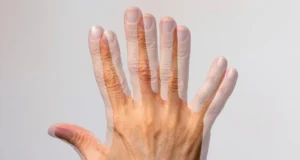What complications can arise if Amblyopia is untreated?
When you come across the term ‘Lazy Eye’, it might get you thinking of an eye that is literally sluggish or idle! But certainly, it isn’t that way.
Amblyopia, also known as “Lazy Eye,” occurs when the brain suppresses or ignores the images of one eye in favour of the other. It occurs when there is a breakdown in how the brain and the eye work together, and the brain cannot recognise sight from one eye. Over time, the brain becomes increasingly reliant on the other, stronger eye, while vision in the weaker eye deteriorates. Because the stronger eye works better, it is referred to as “lazy eye.”
Amblyopia affects approximately 3 to 5% of the population and is frequently undiagnosed. It is not correctable only with glasses or surgery and, if left untreated, can result in permanent vision loss.
Fortunately, amblyopia treatment is possible with vision therapy at any age, but the treatment responds best when the condition is detected early. On the other hand, a lazy eye may not be detectable during a routine eye exam and must be diagnosed through specialised visual acuity testing.
What are the symptoms of amblyopia?
- Headaches or eye strain with blurred vision

- Squinting, head tilting, or closing one eye to see

- Double vision

- Poor depth perception
How is amblyopia diagnosed?
A lazy eye or amblyopia is typically diagnosed during childhood. However, it may remain undiagnosed if someone is not visiting an eye doctor during childhood. It is not always obvious that a child has the condition because a child’s age makes it difficult for them to tell us exactly what is wrong. However, you may notice that a child’s eyes are not working well together when you look at them.
What complications can arise if amblyopia is left untreated?
Whether your lazy eye was undiagnosed as a child or you developed it as an adult, the complications of untreated, lazy eye are the same and include:
Blindness
According to the National Eye Institute, lazy eye is the most common cause of single-vision vision loss in the United States. This is due to the possibility of vision loss if left untreated.
Central vision problems
If lazy eye is not treated, the development of central vision may be hampered.
Strabismus
Strabismus is a condition in which the eyes are not properly aligned. If the lazy eye is not treated, it can become permanent.
Why is early amblyopia treatment crucial?
The first years of life are crucial for the development of vision. Connections between the eye and the brain are formed during a child’s first 7 to 10 years. Treating amblyopia while those connections are still maturing is far more effective. Changing your child’s vision system is difficult once it has fully developed. If the amblyopia is not treated, they will most likely have poor vision for the rest of their lives. Treating it with glasses, patching, or other methods will not be possible.
What is it like to live with amblyopia?
Depending on your child’s age, wearing an eye patch may be difficult. If a patch bothers your child, consult your doctor about other options. Amblyopia may reappear after treatment is completed. It is critical to continue to monitor your child for symptoms. If the symptoms return, the treatment will have to be repeated. Some children are treated until they are 10 years old.
What are the treatment options for amblyopia?
Amblyopia treatment entails the child using the weaker eye more frequently. This aids in the development of that weak or lazy eye. To force the child to use the weaker eye, an adhesive patch will be placed over the stronger eye. Most children wear patches for 2 to 6 hours per day.
Eye drops or special glasses are sometimes used to blur the vision in the stronger eye. This also strengthens the weaker eye by making it work harder. Nearsightedness and farsightedness can be corrected with glasses or contact lenses.
Advanced amblyopia treatment with Bynocs AmblyGo
AmblyGo is a highly developed software that requires a person with amblyopia to play games to treat this condition. The games are to be played for 30 to 40 minutes per session, 5 days a week. You can expect an improvement in eyesight within 6 to 7 weeks after the induction of the treatment.
This treatment needs minimal setup and is completely non-invasive. Since this therapy involves playing games, it becomes even more engaging for the patient, whether an adult or a child. Top ophthalmologists recommend AmblyGo for amblyopia treatment as it has shown 90% success rate with zero recurrences of the disorder.
Contact our Bynocs team to know more.

